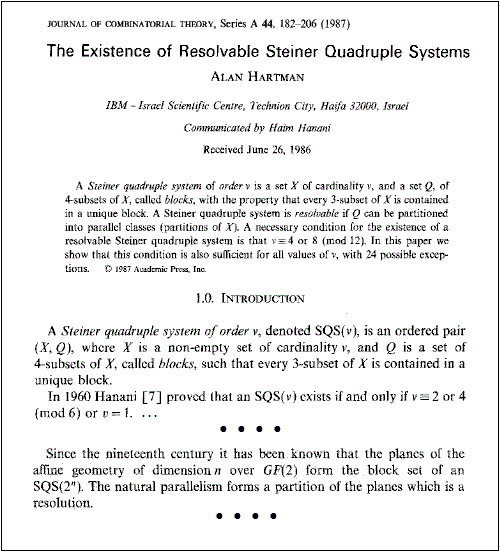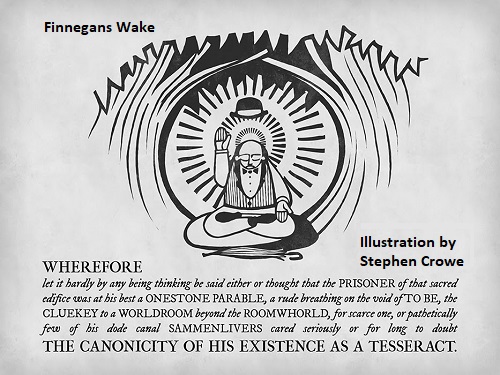An image from a Log24 post of March 5, 2019 —
The following paragraph from the above image remains unchanged
as of this morning at Wikipedia:
"A 3-(16,4,1) block design has 140 blocks of size 4 on 16 points,
such that each triplet of points is covered exactly once. Pick any
single point, take only the 35 blocks containing that point, and
delete that point. The 35 blocks of size 3 that remain comprise
a PG(3,2) on the 15 remaining points."
Exercise —
Prove or disprove the above assertion about a general "3-(16,4,1)
block design," a structure also known as a Steiner quadruple system
(as I pointed out in the March 5 post).
Relevant literature —
A paper from Helsinki in 2005* says there are more than a million
3-(16,4,1) block designs, of which only one has an automorphism
group of order 322,560. This is the affine 4-space over GF(2),
from which PG(3,2) can be derived using the well-known process
from finite geometry described in the above Wikipedia paragraph.
* "The Steiner quadruple systems of order 16," by Kaski et al.,
Journal of Combinatorial Theory Series A Volume 113, Issue 8,
November 2006, pages 1764-1770.


















